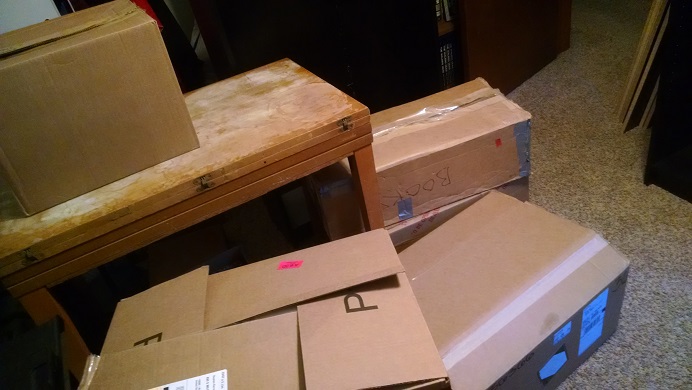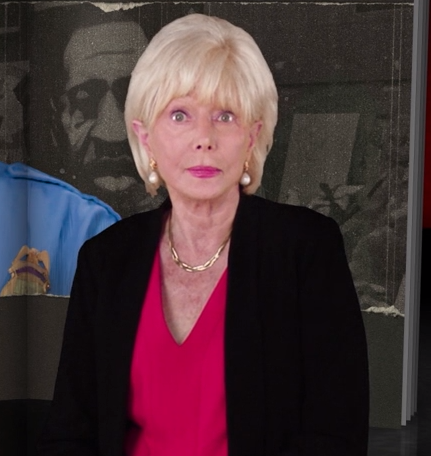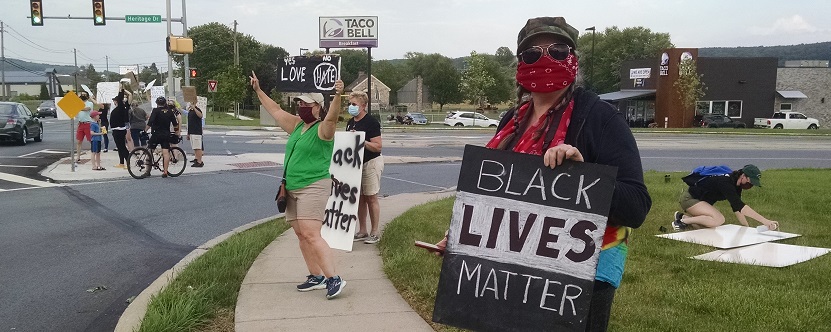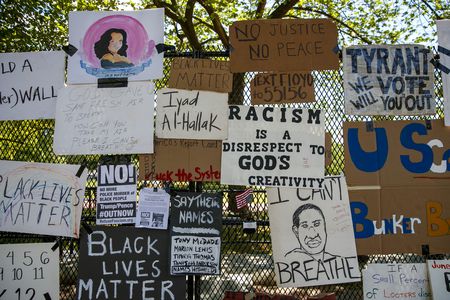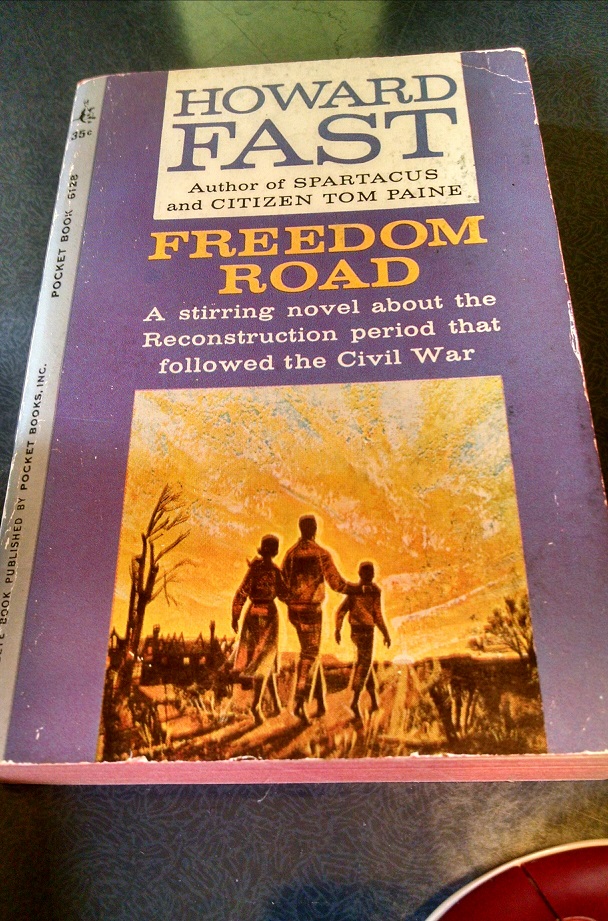The Bear Comes Home
The culmination of years of events has finally come to pass – I am now officially moved in with my BFF in Morgantown, PA. Depending on how much you have followed my blog and whether or not you know me IRL, you may have been watching the story unfold.
First, she came to visit me from Pennsylvania while I was living in North Carolina. Then we started visiting each other frequently and travelling together, and a new phase of our lives began. I went up and met her kids for the first time; they were boys age 10 and 13. She came down and met my tabletop gaming buddies. She even brought the kids with her sometimes, and they all joined me at gaming conventions.
Sometimes I would go up to see her, and sometimes she would come down to see me. And we went on a lot of fun trips together. She took me on my first trip to New York City, and to my first Broadway show. We’ve seen so many shows since then; I’ve basically become her theater buddy. And since she’s a director, I got to see a lot of her shows. I became her number one fan.
We travelled to Chicago every summer for G-Fest along with the boys’ Dad, who is also my friend. This was a tradition with them since the boys were even younger, and my joining them was part of the process of being enfolded into their family. But I wasn’t completely enfolded yet, since I was still living in North Carolina. The distance between us was kind of fun at first, since it was exciting to see each other again after an absence of a couple of weeks. But the travelling got tedious. It was a seven hour drive between our houses. Flying was an option, too, since we could get cheap tickets on Frontier Airlines, but even that has its inconveniences.
Then, a few years ago, some Water Spirits came and trashed my house, teaching me a lesson about the relative importance of material things, but also helping me to realize what a spoiled bear I am. Some months later my job in North Carolina came to an end. It was starting to look like the Universe was sending me a message. I went up into the mountains to watch a solar eclipse and ponder my next course in life.
I started looking for work in Pennsylvania, so that I could move closer to my BFF and her family. I enjoyed my last months in North Carolina boardgaming with my buddies and performing with my choir. Then I landed a position in Wilmington, DE and in a whirlwind five weeks got an apartment in West Chester, PA and moved on up. My recently renovated house quickly sold, and I’m pretty sure the buyer re-did all the work that the insurance company paid for.
The apartment was expensive and the commute to Wilmington was a pain. It made sense for me to eventually move in with her family, though I would have to find a new job first that would put me closer to her house. I have to admit I was dragging my feet. I have a lot of stuff and I like to control my personal space. It would be a big change for me to move in with someone for good, after more than a decade of living alone.
I did get a new job, which took care of the commuting problem. And then along came a little thing called the novel coronavirus. Suddenly I was working from home, and it only made sense for me to be doing this from my BFF’s house. I brought my essential things over and hunkered down with her. The apartment languished, unused.
As we got used to the routine of living together and sharing her house, it was obvious that I should just complete the move. There was a little wrangling over how we would use the space and where my stuff would end up. I mostly fought to have a place to shelve all my books and boardgames – that carefully curated collection I’ve built up over my many years. Figuring out how to share space is just part of the hard work of building a lasting relationship.
The big move happened last week, and all that’s left now is to clean up the apartment and collect a few final possessions. The lease expires soon. As for my new commute – well, I’m not sure when that will start up. Pennsylvania is loosening coronavirus restrictions, but I haven’t heard anything about going back to the office. So I’ll be here in Morgantown for the foreseeable future.
It’s been a long trip to get to this stage of my life. Along the way I’ve done a lot with my BFF, and our relationship has bloomed. I’ve joined her family and I’ve watched her boys grow up – her eldest is in college now, and has a car, a job, and a girlfriend! And it’s good that I’m living with her now, considering that she needs support at a time when her industry – theater – is so troubled.
It’s also good that we got so much travelling done during the past six years, considering that we’re likely to be homebound for a long while to come. I’m just glad that home is here now, with my girl.
